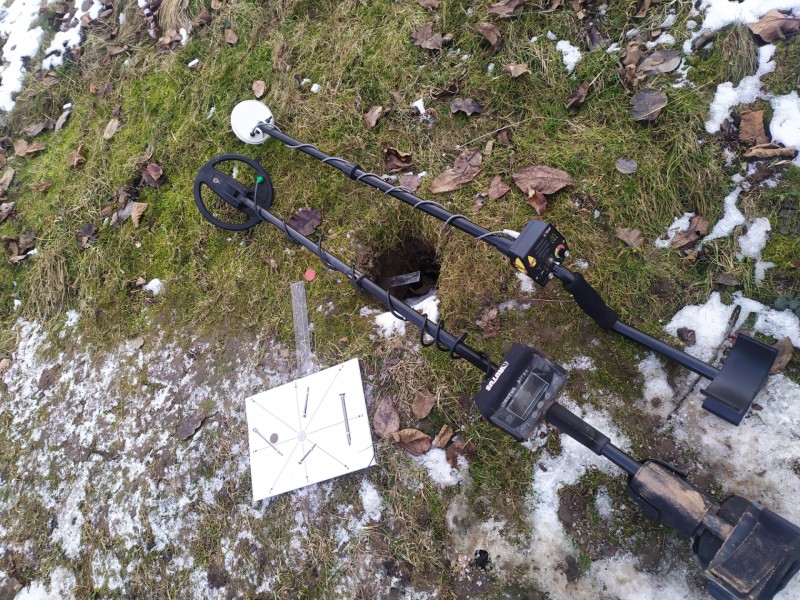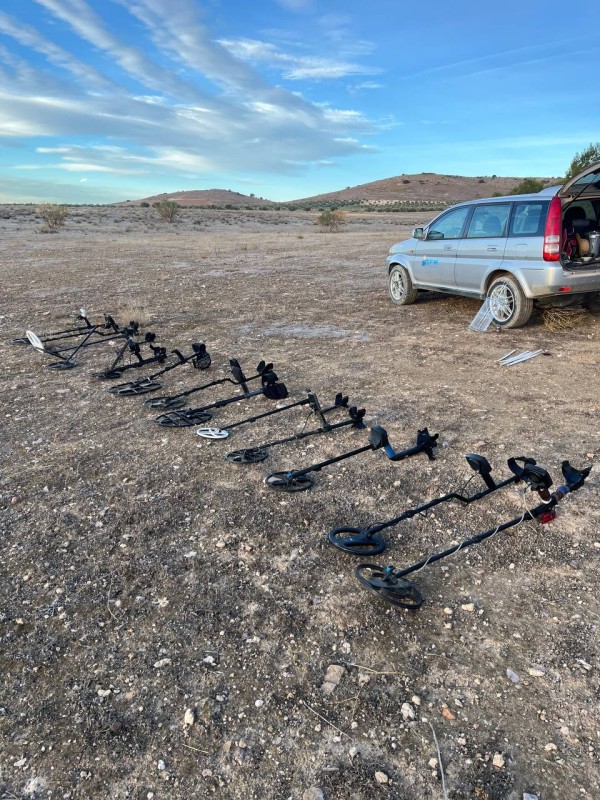-
Posts
1,337 -
Joined
-
Last visited
Content Type
Forums
Detector Prospector Home
Detector Database
Downloads
Everything posted by EL NINO77
-

Which Frequency Is Running In Each Mode?
EL NINO77 replied to vive equinox's topic in Minelab Equinox Forum
..GB_Amateur..... Yes .. you are right... I used 2 large silver coins in the test... namely 1 Silver dollar/investment coin/ with high purity silver 999/1000.. and for comparison also a large 37mm Spanish Silver coin 5 pesetas 1891.. of purity 900/1000..for verification..to check the results of the test..for highly conductive coins..but what is important is the results of the test range for these highly conductive coins were practically the same... The next highly conductive coin in the test was a rough larger Roman AS coin... because I was interested in how the range of such a coin would change depending on the used frequency or the use of a differently weighted multi-frequency. Now to ... the large 40mm gold coin 4-Dukat 1915..-weight 14 grams.. /size of a Silver Dollar/...this gold coin has a fineness of 0.986/1000 ..which is practically 24k gold... .....And that's exactly why I was interested in how this large pure gold coin fares against other 2 gold coins - 20mm gold Dukat coin 1915 986/1000- 3.5 gram 24K .. gold and above all against the very old 2000 year -5 gram Celtic coin of the Stater - which is probably a gold alloy with the addition of silver /electrum /.. ...for completeness..I supplemented this test with various other coins-- in order to get a complete overview.. about ...how big a difference in range the set high and low frequency can make for these types of coins.. Take my test with a margin...,,,but take into account one fact...namely...that for large silver coins or thick copper coins of the Roman AS type...there is still a large margin in the range when using a frequency below 4 khz ..and I expect that the used frequency of the detector working at - 1.5 Khz would be able to significantly reduce the reach of such large and highly conductive coins... ...This would agree with George Payne's measurement results..who determined the optimal frequency for the Silver Dollar coin to be around 900 hertz/0.9khz/ ..As for the large 40mm/14gram/24k gold coin, the test showed that the frequency of 4 khz or low-weighted multi-frequency works perfectly for optimal reach on such a large 24k..gold coin... .. Another interesting result in the test is... a test on an old 2000-year-old gold 5-gram Stater coin - made of a low-conducting gold alloy with an admixture of silver--/electron/where it turns out that the frequencies 13khz - 20khz /or a higher weighted multifrequency work best / .. -

Which Frequency Is Running In Each Mode?
EL NINO77 replied to vive equinox's topic in Minelab Equinox Forum
I decided to write something about this topic... it's been a few days since I found time to test several detectors that I currently have with me on several types of coins, because I was wondering if the detectors Minelab Equinox800, CTX3030, xp ORX, and Rutus ATREX when using a multi-frequency,, or a single frequency from 4khz to 40 khz to compare the range response for a given type of coin.. Simply after the last experiences in detection in the field... I was interested... to which type of coin will the given detector respond best... and at what multi-frequency or 1 frequency... from 4khz to 54 khz... ......so I checked these detectors in a simple Airtest.. for various coins.... I was surprised by one fact during the tests... namely that the large 40mm... . a 4-ducat gold coin - the size of a silver dollar... had a significantly greater range than a silver dollar, by 7-8 cm... more.. 37cm Silver Dollar vs. 45cm a Gold 4-Ducat coin..!!! This means that the current detectors are frequency or multi-frequency dependent ..around 4Khz, which is more optimized for higher medium conductive large gold coins...but not for highly conductive Silver dollar type coins.. ....... the picture N.1 shows the relative range of detectors for different types of gold and silver coins using a low-weighted multifrequency..or 1f frequency 4khz...!!! -------------------------------------------------------------------------- for comparison... I will give a test of the same detector at 1 frequency of 17.4 Khz.. Here you can see how the use of a high frequency is associated with an increased or decreased range on various high-conductive, medium-conductive and low-conductive coins... -
The ground stabilizer is basically a Hot rock correction setting ... where setting the ground stabilizer to a value of 2 is basically a neutral HT correction, a setting of 1 means a hot rock setting to +, which can return deep signals from the iron zone back to the non-iron zone... clearly not in every terrain you can use the HT correction to + - because you may start to get a signal of a ground fault, for example with *ID at 99-98... then you have to set the HT correction to a neutral value../ground stabilizer 2/ This setting is nothing new... Whites often used it hot rock correction on +... in their detectors in deep programs like Deep Silver...
-
.... Roman AS is a big and thick highly conductive coin.. so I was wondering how the manticore would react to such a target... for comparison, I will show AS as well as other coins such as for example the gold stater/electrum/, 1 gold ducat and gold 4 ducats coin ...will react with the range.... if you have the detector EQUINOX program multiF Park1 ......An interesting result in this test was...that a 4 cm gold coin of the same size as a silver dollar...had a significantly greater detection range than silver coins of the size of a dollar/silver Dollar and silver 5 Pesetas 1891 /. I did similar tests with CTX ...with similar results..
-
I tried manticore on a Roman AS coin, and the ID was at a value of around VDI 90-94 ... so it's cool. in the positions on the flats and on the edge when detecting the side of the coin..
-

Amount Of Gold Vs Metal Detectors
EL NINO77 replied to Kostas 13's topic in Metal Detector Advice & Comparisons
Kostas... the detector working only in dynamic mode with discrimination... can pass various large or complex highly conductive targets,, so that it gives an iron signal to such a target,,, so if you use iron discrimination, you can pass such a target... It can be a column of large silver highly conductive coins, a pile of coins or larger pieces of highly conductive metals/even pure gold/.. But the detector that works in Mix mode/ 2 channels -pseudostatic channel + dynamic-discrimination channel /.....even if the discrimination channel of the detector failed to identify the signal, the pseudostatic channel will warn you that there are bigger target under the coil. .. -

Tesoro Mojave Vs Silver Sabre Umax?
EL NINO77 replied to NCtoad's topic in Compass, D-Tex, Tesoro, Etc.
Mojave... for maximally good 3D deep separation,, I recommend slow sweeping with the coil..., with normal movement of the coil, the 3D deep separation is a bit worse ... with Mojave ..when searching for deep coins - even low conductive hamered coins, you can see the effect of increasing the VDI with a deep target.../ .we know the effect of a 1-frequency VLF detector/ where the VDI increases strongly for deep low-conductivity targets ...and therefore you can use a high-set discrimination .. where the Mojave will stand out strongly is the 2D flat separation of the "Monte performance Nailboard test"-situation in "Ghost Town".. this separation on the 7" CC precision coil is really excellent.. -

Is The Axiom Our New King???????
EL NINO77 replied to Norvic's topic in Metal Detector Advice & Comparisons
I'm betting big ....on 1.15 grams... but maybe I believe myself too much....Norvic.... -

Bbs / Fbs / Recovery Speed Questions
EL NINO77 replied to Digalicious's topic in Metal Detector Advice & Comparisons
At Etrac, for good separation, you have to set it to Fast, and the response to Long or Smooth, then it separates well... in the mode response Normal and Pitch hold ... the separation worsens significantly.. -

Manticore Dreamers Like Me Will Enjoy This Vid
EL NINO77 replied to PSPR's topic in Minelab Manticore Forum
1. What is the best thing about the Top Digin test field... that the targets were placed so that they faithfully simulated the real conditions of the field, which contains pieces of iron, cermic and coal... and the low reactivity setting of the detector... here it does not have to work reliably on deep targets,,, - what I mean by that is that it is not a simple low-mineralized test environment.... 2. even the use and setting of a low frequency in the detector may not work reliably /For example, 8 khz../. because in this difficult terrain you will lose a lot of deep and separation targets.. Let's look at the end of the table for the least scored detector tests... incorrect settings and other things... an excellent detector will cause very low detection capabilities in this tested field.. the number of detected targets can be very low.. only 12-16 detected targets..!!! total of 30 targest...!!!!! This was also shown during tests of powerful detectors, when they were set to low reactivity and low frequency.../even with Deus1/ where detectors set in this way obtained few targets... -------------------------------------------------------3... Multi-frequency..... For this Top Digin testing ground... 1F frequencies from 15 khz to 20 khz and higher work best.../maybe up to 30 khz - as in the case of my Vista gold Gain/... Vista Gold Gain, Gold Max Power, TX 850/ Tek G2/, MXT PRO, Deus 1, ATREX on 1F.. and other excellent 1F detectors are in the "Top Ten" detectors ...Correctly set single-frequency detector./15-30 khz/. it achieves excellent results on this test field... and is also very universal... ------------------------------------------------------- The middle part of the table tells which detectors and at which settings they detect 25 targets out of a total of 30 targets... is the loss of 5 targets from one test field too much or too little?,,,, I'll leave that up to you... ------------------------------------------------ 3... The use of "Multi-frequency" alone in the tested multi-frequency detector does not guarantee... that the multi-F detector with this setting will achieve the best results in the field... because the detector on the used multi-frequency must still separate well and at the same time maintain the detection depth.. on deep or deep separation targets.... I note one setting /reactivity/ of the tested detector... ...It is a very demanding task even for multi-frequency.. Testing of multi-frequency detectors CTX 3030, ETRAC, EXPLORER SE PRO, SPECTRA V3,INTRONIC, EQUINOX600-800, VANQUISH 340-540, APEX, ATREX, DEUS2, and now Manticore and Equinox 900..., showed the advantages and disadvantages of each type of multi-frequency in these detectors. . -

Membership Check In Or Be Purged (Completed)
EL NINO77 replied to Steve Herschbach's topic in Detector Prospector Forum
Steve.. as always.... "Detector prospector forum" is a forum with excellent information "and excellent serious and trustworthy people.-who are members of this forum... I want to thank them for their opinions and observations... which I have been reading for several years... and I am learning... from it... Your information and stories are also very valuable, Steve... and I thank you for that too. if I can..I read this forum every day..and I also contribute my information quite often.. I wish everyone a nice day... -

Manticore Dreamers Like Me Will Enjoy This Vid
EL NINO77 replied to PSPR's topic in Minelab Manticore Forum
....here is the new table, which is supplemented with Deus 2 and Equinox 900... Manticore is still leading... it has 141 points... You can find important data with columns marked with letters: A- place in the ranking. F- total Number of points obtained from detected targets.. note more difficult separation or deep targets have a higher point rating.. W-number of detected targets out of a total of 30 targets...don't think that getting 27,28,29 targets out of a total of 30 targets is easy...that's the advantage of the best detectors... ..these detectors do not detect, and pass 1, 2... or 3...really difficult targets...out of a total of 30 targets...which is an excellent result...👍 ...for example, the ACE 400i detected 14.. targets.. out of 30... on this field..it also means that it will pass and not detect another 16...!!! X- interesting data...-terrain conditions - from the table you can see that the best results are obtained by detectors in ..wet terrain.. -

Manticore Dreamers Like Me Will Enjoy This Vid
EL NINO77 replied to PSPR's topic in Minelab Manticore Forum
I think Mike will soon... publish ..... a table with results, supplemented by Deus 2 and Manticore, and also supplemented by Equinox 900.. ...still in the Top 5 ..... are the best placed... detectors Manticore, Deus1, Etrac, Atrex, and XP Gold Max power... Note one more thing....this table shows the 20 best tests ..some detectors were tested multiple times on different settings or coils.....and this Table evaluates...the results of these detectors in individual tests.. -

Manticore Dreamers Like Me Will Enjoy This Vid
EL NINO77 replied to PSPR's topic in Minelab Manticore Forum
I believe that Manticore's performance on low-conductor targets in the Low conductors and Gold programs is really good./compared to current detectors/ ..., so it should also be reflected in Gold prospecting.. -

Manticore Dreamers Like Me Will Enjoy This Vid
EL NINO77 replied to PSPR's topic in Minelab Manticore Forum
Yes Alain...the Equinox 900 is faster than the Equinox 800...even the test results confirm it...you can set a lower recovery speed...to get really good results on the test field... test success in 1 test line / 30 targets /.. is still.. at 93%.. Manticore still has.. the best .. success rate in 1 test line /30 targets/ at 97%... Remember that any percentage of success above 90% here means that it is the most difficult to detect. - deep,, or separate difficult targets.. I consider detectors that achieve a success rate of at least 90% to be really good and universal,,, and I consider a success rate of at least 93% to be excellent /in the Top 5/.. But very interesting and decisive will be the testing in 2 ..testing line -"Next Level"/ another 30 targets.../more masked by iron or very deep../ where the success of the detection can make more difference....we'll see.. I believe that 2... very demanding testing line will show strongly... what kind of detection potential does Mantiicore have compared to other very good high-class detectors.. maybe here Mike .... write something or post a video of tests in 2 very difficult testing line... of another 30 targets... -
that is very likely...because the small elliptical HF coil on the ORX ..does really well in hematite..
-

Manticore Dreamers Like Me Will Enjoy This Vid
EL NINO77 replied to PSPR's topic in Minelab Manticore Forum
I know the Top Digin test field very well... and Mike/ Manicore test/... and Jack / Equinox 900 test and Equinox 800 test/ are my colleagues.. I consider the Top Digin test field to be really challenging.. from the point of view of the depth of the targets,,, or the targets that are placed between the iron. and only really good detectors ... not only with good deep detection ... but also with excellent separation can achieve really good results on this test field ... and that on one single detector setting ... Mike.... is one of the Testers... Minelab Manticore and Equinox 900... so you can trust that he knows.... how to use this detector... not only in this test field,,, but also in detection.. right in the field... The Manticore test is on the General program... where Manticore achieved really excellent results... so wait for more tests to come... also on other programs... and also on the second part of the test field where another 30 targets are stored. ..+ several other very deep subjects.. -

Manticore Dreamers Like Me Will Enjoy This Vid
EL NINO77 replied to PSPR's topic in Minelab Manticore Forum
The 50% larger TX of the Manticore is a guarantee that the signal/noise-EMI/... ratio will still be better than that of the Equinox 900... I am a fan of using TX Bost... with the Spectra V3, so I know very well how that signature is on the higher resistance of this detector in EMI... but also in the practical range of the detector on targets... Remember one thing,,,Equinox600 and 800... was more built for low and medium conductors...but with more or less average range on high conductor coins.../the exact opposite of Etrac and CTX3030/...and here TX bost and other with Manticore's Multi IQ+ solution /+50% more Tx/ brings a strong and balanced reach to all conductive targets... so I feel that manticore will still be better in everything than the new Equinox 900... Of course, you'll spend more for Manticore...but you'll also get more.....practically*Better detector.. -

Manticore Dreamers Like Me Will Enjoy This Vid
EL NINO77 replied to PSPR's topic in Minelab Manticore Forum
what distinguishes the CTX3030 / in the Ferous-Coin setting /... from Etrac.. is stable ID on deep signals.. -

Tesoro 4” Concentric Coil On Mojave??
EL NINO77 replied to NCtoad's topic in Compass, D-Tex, Tesoro, Etc.
The 4" concentric coil...that I have on the Tesoro Mojave can be used best in separation,, but don't expect a lot of depth performance from it...,,rather a very moderate range.. another thing is that in mineralization it will not work better than a 5.75" concentric coil,,, range of 4" CC /tesoro Mojave/coil for various objects and various coins.. -

Deus 2 13x11" Coil First Impressions And Data
EL NINO77 replied to F350Platinum's topic in XP Deus II Forum
Vincente... I think you did an excellent job in testing Deus 2 and Aka Intronik...👍 Can you say a little more about detection with Deus 2 on a large 11x13" MF D2 coil? I think people are really interested in it... -
This is a great job, congratulations... also a very good inspiration...,, thank you for sharing...👍
-

Deus 2 13x11" Coil First Impressions And Data
EL NINO77 replied to F350Platinum's topic in XP Deus II Forum
The myth of the big coil still applies, in this case you get a bit more depth on the 11x13" D2 coil than on the round 11" coil... we recently did comparison tests in the field... and the 11X13" D2 big coil has a deep advantage in this case... This terrain is very specific...because it strongly reduces the detection depth of coin detection...but for the best depth results...here you have to use really very low reactivity in all test detectors.. Vincente. /with Deus 2/,... Me and ...Pasadete... in detector testing.. -
If we go, we can say.. that the predecessor of the design for Quest was the "vertical design" of the XP panel, and Quest put the panel in a fixed handle with built-in batteries.. as for the Nokty Legend, the design and operation of the multi-frequency are quite similar to the design and operation of the Equinox multi-frequency "Multi -IQ"...,, but let's leave it to the experts to determine how similar or dissimilar these detectors are...

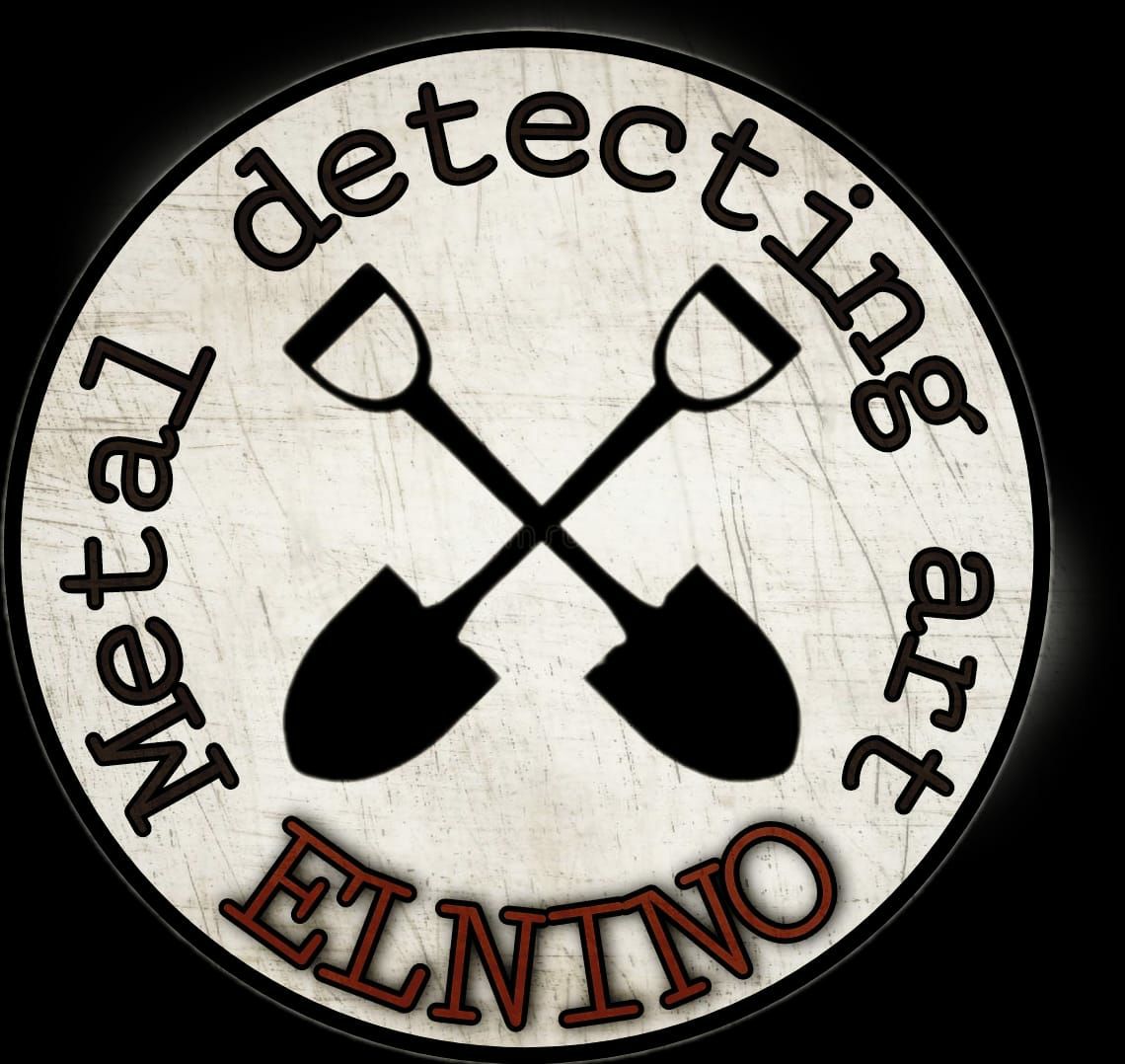
.thumb.jpg.f98abe5c9e672f04b931604f57986251.jpg)
.thumb.jpg.b3f0875fbdeff81b065fc758b405fa42.jpg)
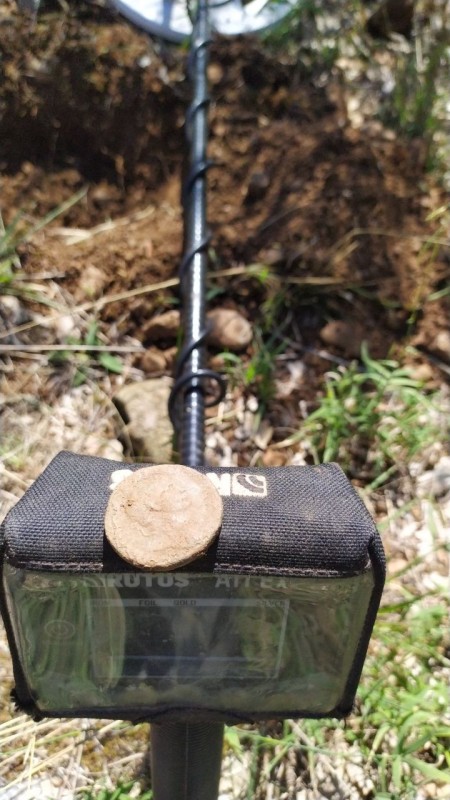
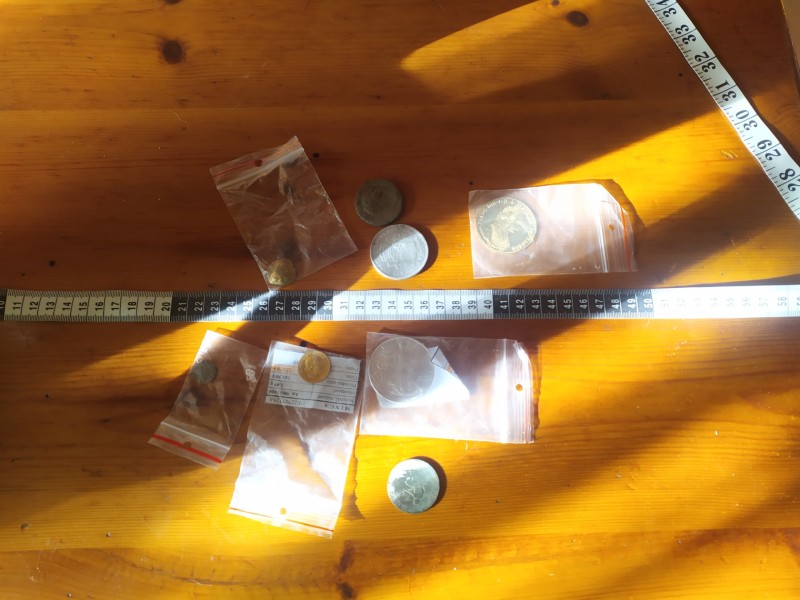
.thumb.jpg.e18eb715c5b404e32b14d414a76389b8.jpg)
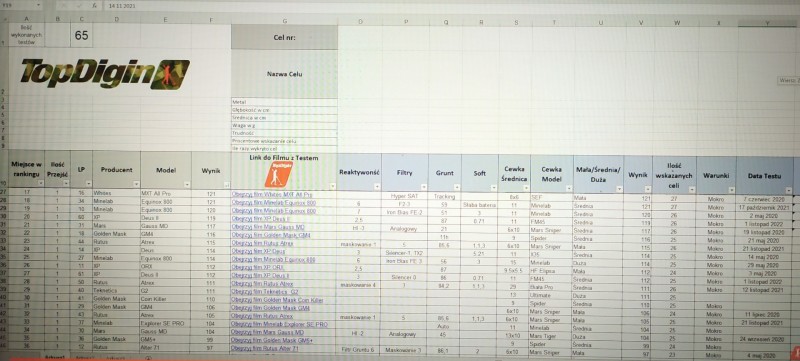
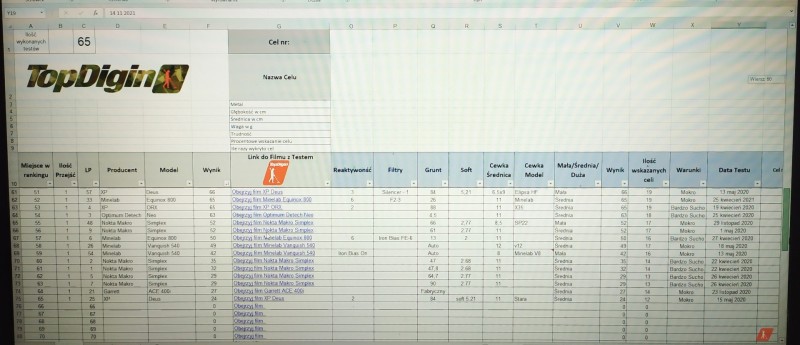
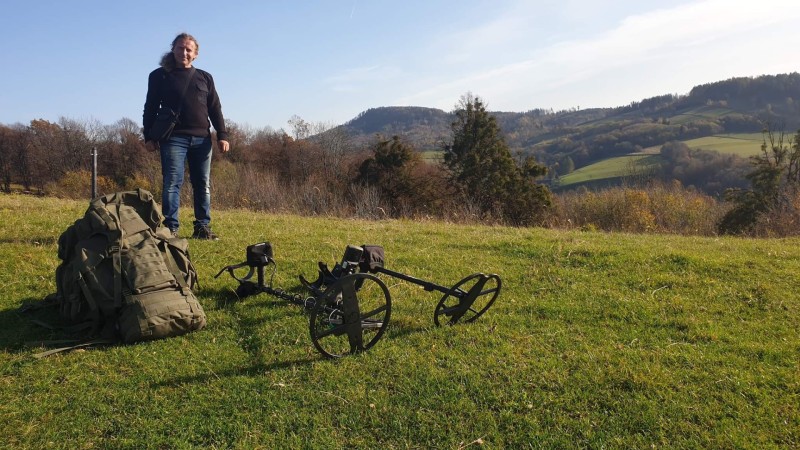
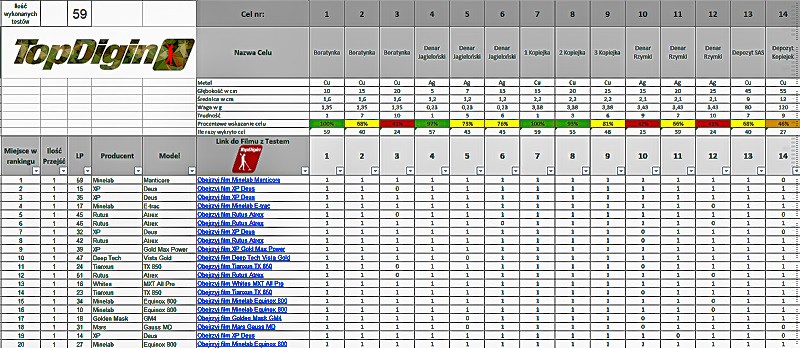
.thumb.jpg.0c47e9685a24c4d31bc1fb2ff9e6ba7a.jpg)
